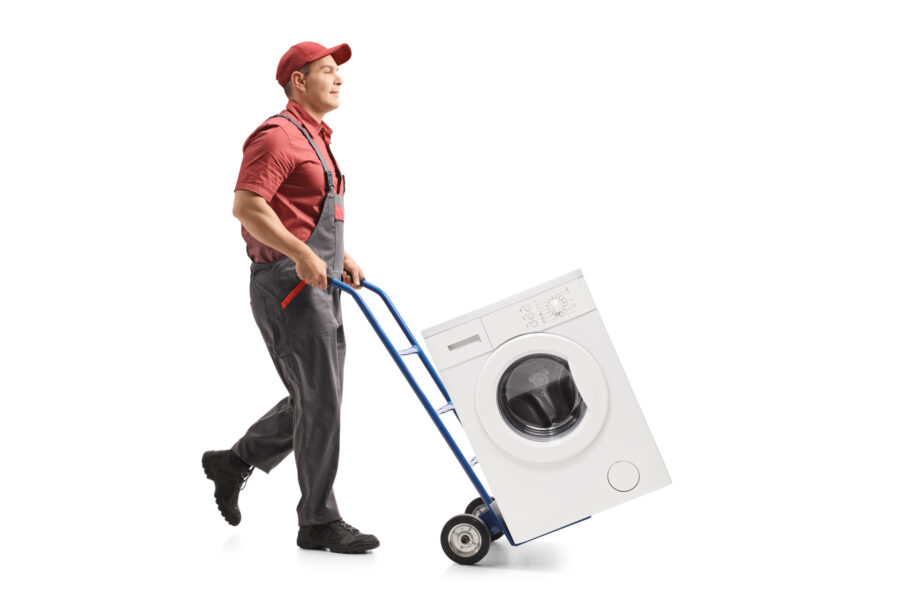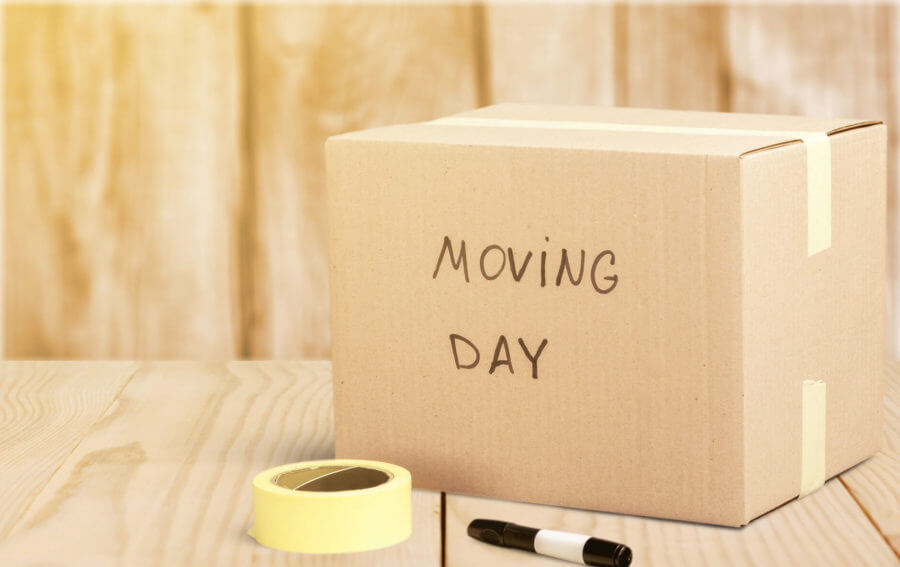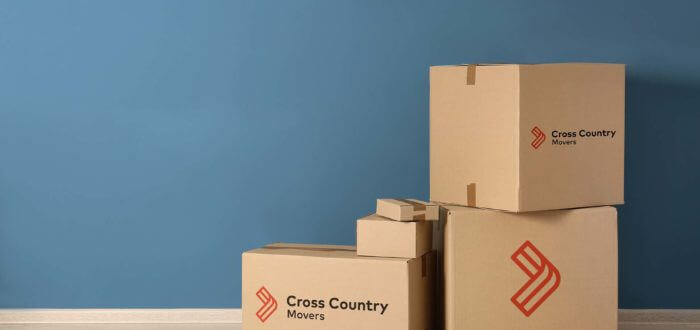

Mastering the Art of Packing – The Best Way to Pack for a Move
Posted in How-to,Moving Tips & Tricks on January 31, 2024
Moving to a new home can be an exciting journey, but let’s face it, packing can feel like a puzzle that’s missing half its pieces. Mastering the art of packing — finding the best way to pack for a move — is easier than you might think. We’ll unlock the secrets of space-saving packing techniques that make the most of every box and bag. Get ready to pack like a pro!
What is the best way to pack when moving cross country? Efficient packing methods such as categorizing items, using high-quality materials, and labeling meticulously are essential. Start by decluttering – donate or sell what you don’t need. Group belongings by room and purpose for organized unpacking. Use sturdy boxes and bubble wrap for protection, especially for fragile items. Vacuum bags are great for compressing clothes and linens. Label each box with its contents and destination room. Disassemble bulky furniture to save space. Keep essential documents and valuables with you.
Start With a Thorough Plan Before Packaging Anything
Going on a packing adventure without a master plan is akin to navigating a maze blindfolded – thrilling, but not recommended. To plan and organize a relocation like a pro, you’ll want to create a comprehensive relocation checklist.
Start by listing all the tasks, big and small, that you need to tackle before the big day. This includes gathering packing supplies, deciding which items to donate or sell, and scheduling services like movers or cleaners. Don’t forget to plan for the unexpected, like last-minute relocation errands or a farewell party with friends!
Creating a Packing Timeline and an Inventory of Items
Timing is everything. We’ve already learned from Shakespeare that “it’s better three hours too soon than a minute too late.” So, begin by creating a manageable timeline that ensures you’re not frantically throwing a beloved teacup collection into a box on the relocation day.
Another important preparatory tip is to make an inventory – a detailed list of all belongings, room by room. This list is your golden ticket to not forget to do anything important. Begin with less frequently used items and rooms, giving yourself plenty of time for the more essential areas as the moving date approaches. Set weekly goals, like packaging all decorative items one week and tackling the kitchen the next.

Gather Necessary Packaging Supplies and Materials
Topping your relocation to-do list should be gathering all the essential packaging supplies and materials. Different packaging materials serve different purposes, so choose wisely to ensure the belongings are well-protected during transit. You’ll need:
- Sturdy boxes in various sizes,
- Bubble wrap,
- Packing peanuts for cushioning,
- Tape,
- Markers for labeling,
- Wardrobe boxes for clothes,
- Dish-pack boxes for packing fragile items for a move.
Search for these materials at supply stores, home improvement stores, or online. For budget-friendly options, check platforms like Craigslist website, where you can often find free or low-cost boxes. Of course, if you opt for working with Cross Country Movers, our team will bring along all materials needed for efficient relocation.
Opt For Eco-Friendly Packing Materials
Utilizing eco-friendly materials can be a smart move.
If sustainability is your priority, purchase biodegradable packing peanuts or recycled paper. Use old newspapers or magazines for wrapping and cushioning items.
For boxes, seek out recycled or reused options from local stores or online marketplaces.
Cloth-moving blankets are a great reusable alternative to plastic wrapping for furniture. You can also use items you already own, like towels and linens, for padding. These environmentally friendly choices not only reduce waste but also add a green touch to the entire process.

The Best Way to Pack for a Move – Use Smart Packaging Techniques
A key aspect is to pack efficiently, utilizing every inch of space while protecting items. One effective technique is the nesting method, where smaller items are placed inside larger ones. It’s also beneficial to roll clothing instead of folding to maximize space in cartons.
For anything fragile, use the layering approach with soft materials. These packaging tips for relocating not only save space but also reduce the risk of damage, making the process easier and less stressful.
Start With the Least Used Items
Begin with items that are seldom used. For example, pack winter clothing if relocating in summer, as these garments won’t be needed immediately. Similarly, pack china, bottles, and other rarely used kitchenware in advance. Seasonal decorations, books from the home library, and extra linens fall into this category.
As you start with these items, space is gradually cleared, reducing clutter and making it easier to focus on daily essentials as the moving date approaches. This approach ensures a more organized and less overwhelming experience.
Extra Wrapping and Cushioning Is Required for Fragile Items
When it comes to delicate possessions, extra care is essential. Pack glasses and other breakable items with ample wrapping and cushioning to prevent damage. Use bubble wrap, paper, or even household items like socks or towels for added protection.
Place these wrapped items snugly in boxes, ensuring there is no movement during transit. Filling gaps with crumpled paper or foam peanuts provides additional security. It’s also wise to clearly label these boxes as “Fragile” to alert handlers to the delicate contents within.
Don't Overfill the Boxes
Properly organizing belongings means being mindful not to overfill boxes. Overpacking can lead to boxes that are too heavy to carry. For example, when packaging books, distribute them evenly among several boxes instead of placing them all in one. The same principle applies to packing pots and pans or other heavy possessions.
A good rule of thumb is to keep each box’s weight manageable and ensure the top closes flat. This strategy not only helps in avoiding injury during handling but also helps protect the contents from being crushed or damaged.
Organize Boxes Carefully
While moving, one finds themselves amidst a sea of cartons. Remember, you’ll have many boxes, so don’t mix them up! It’s like a game of Tetris where every block needs its perfect spot. Begin by grouping boxes by room – kitchen, bedroom, living room, and so on. This not only simplifies the unpacking process but also helps in keeping track of belongings.
Prioritize boxes containing essentials that are needed immediately upon arrival. Designate a color or symbol for these ‘open first’ boxes. When you maintain an organized system, the chaos of relocating becomes a manageable and even enjoyable puzzle.
Use an Effective Labeling System
An effective labeling system turns chaos into order. Think of relocation labels for boxes as your GPS guiding you through the unpacking process. A comprehensive system includes labeling each box with its contents and the room it belongs to and handling instructions like “Fragile” or “This Side Up.”
Color-coding labels for different rooms add an extra layer of organization, making it easy to identify where each box should go at a glance. For those who love tech, they can use QR codes or apps that track box contents. This modern twist on labeling ensures nothing gets lost in the shuffle, and every item finds its new home with ease.

Prepare Large Furniture and Appliances
Preparing large furniture and appliances is a crucial step. Before the big day, measure doorways and hallways to make sure furniture can pass through easily. Clean and empty appliances, securing any loose parts. Protect corners and surfaces with moving blankets or bubble wrap. For possessions like sofas and tables, you should remove legs or other protruding parts for easier transport.
Disassemble and Protect Furniture
To relocate safely, disassembling furniture for moving across the country is often necessary. Start by removing any detachable parts like legs, shelves, or drawers. Keep screws and small components in labeled bags, attaching them to the furniture they belong to. Use moving blankets, bubble wrap, or stretch wrap to protect surfaces and edges. It’s also important to plan the order in which furniture will be loaded onto the moving truck.
Tips for Moving Appliances Safely
Unplug and clean each appliance, giving special attention to defrosting refrigerators and freezers. Secure cords and hoses to prevent them from getting caught or damaged. For washing machines, secure the drum to prevent movement during transport.
Protect surfaces with blankets and use a dolly or hand truck to move heavier appliances. Properly securing and protecting appliances not only ensures their safe arrival but also helps prevent potential injuries from improper handling.

Before Movers Arrive, It’s Time for Last-Minute Packaging Tasks
Prepare for cross-country movers by completing all last-minute packaging tasks. This involves ensuring that everything is boxed up and ready to go. Double-check closets, drawers, and shelves for any overlooked items. Pack up personal items like toiletries, medications, and important documents. Electronics should be properly wrapped and secured. Disassemble any remaining furniture and protect it with moving blankets or bubble wrap.
Prepare an Essentials Box for the First Night in the New Home
Creating an essentials box should be the last step, and it’s a vital component for efficiently transitioning to a new home. This box should contain items you’ll need immediately upon arrival, such as:
- Toiletries,
- A change of clothes,
- Basic kitchen utensils,
- Snacks,
- Chargers,
- A few comforting items like a favorite book or a toy.
The idea is to avoid rummaging through numerous boxes after an exhausting day. Having these essentials easily accessible ensures a more comfortable and stress-free first night, allowing you to settle in and relax.

Cross Country Movers Can Be Your Trusted Relocation Partners
Long-distance movers are your go-to experts for seamless relocation experiences. Our cross-country moving services encompass everything from packing services to careful handling of all belongings. Start by planning packaging with a detailed checklist, then gather the right supplies.
Remember to label boxes clearly and handle fragile possessions with extra care. When it comes to large furniture and appliances, disassembly and proper protection are key. Don’t forget the essentials box for your first night. And for a stress-free move, contact us, Cross Country Movers company, and let us guide you every step of the way. You don’t have to do everything yourself – we are experts at packaging, too.
What Are the Most Common Packing Mistakes to Avoid?
The most common mistakes include neglecting to label boxes, overfilling them, and insufficiently protecting fragile items. It’s essential to use sturdy boxes and provide ample cushioning for breakables. Proper labeling and organization prevent confusion during transit.
How Can I Keep Track of My Belongings During a Move?
Keeping track of belongings during a transition involves creating a detailed inventory list and using a labeling system. Taking photos of items before boxing them up can also be helpful. This systematic approach ensures nothing gets misplaced and simplifies the unpacking process.
What’s the Best Way to Pack Electronics for a Move?
To pack electronics safely, original boxes and packaging are ideal. If unavailable, use sturdy boxes with plenty of cushioning material like bubble wrap. Always detach cords and accessories, labeling them clearly for easy reassembly.
How Early Should I Start Packaging for a Move?
Starting to organize items at least four to six weeks before the transition date is recommended. Begin with seldom-used items and gradually move to daily essentials. This time frame allows for a thorough and less stressful preparation process.
Are There Special Considerations for Packing for a Long-Distance Move?
Packing for a long-distance transition requires extra attention to protection and organization. Use high-quality, durable materials and secure all items firmly in boxes. It’s also important to consider climate variations and ensure belongings are safeguarded against potential environmental changes.








